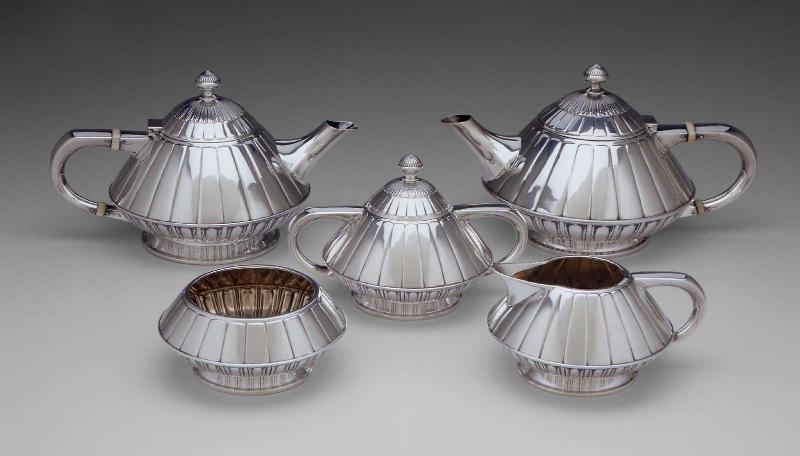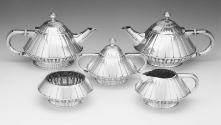Coffeepot, of five-piece hot beverage service
In the early 1900s, the low price of sterling silver, combined with a large number of immigrant metalsmiths and an increasing number of avocational artists, led to a rise in the popularity and production of silver hollowware. By the late 1920s, however, production had dropped considerably. A range of revival styles, but few new designs, was entering the market, possibly due to competition with electroplated silver and chrome-plate manufacturers. In 1925 Gorham Manufacturing Company of Providence, Rhode Island, hired Erik Magnussen to inject a modern look into their lines (cat. no. 340). Reed & Barton, in nearby Taunton, Massachusetts, issued a few contemporary designs, including this tea service that bears an eagle mark, the date symbol for 1928.
Unlike the tall and stately Neoclassical forms designed by Magnussen, the Reed & Barton service has more in common with machine imagery, with its narrow panels along the sides of the vessels and their spinning appearance, emphasized by a radiating design below the finials. From a manufacturing standpoint, the wide cone-shaped and paneled forms were simple to spin and stamp into the desired shape, with little or no chasing required. The vessels’ two cone shapes were soldered together at their widest point, and a stamped foot was applied.
The largest pouring vessel was called a coffeepot by Reed & Barton, although it could also function as a hot-water pot. The service was originally sold with an elliptical waiter that bore a similarly patterned rim. The service with the tray sold for $450; the five-piece service alone for $200.
This text has been adapted from "Silver of the Americas, 1600-2000," edited by Jeannine Falino and Gerald W.R. Ward, published in 2008 by the MFA. Complete references can be found in that publication.









